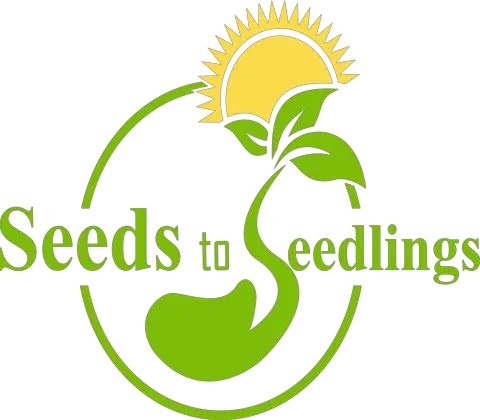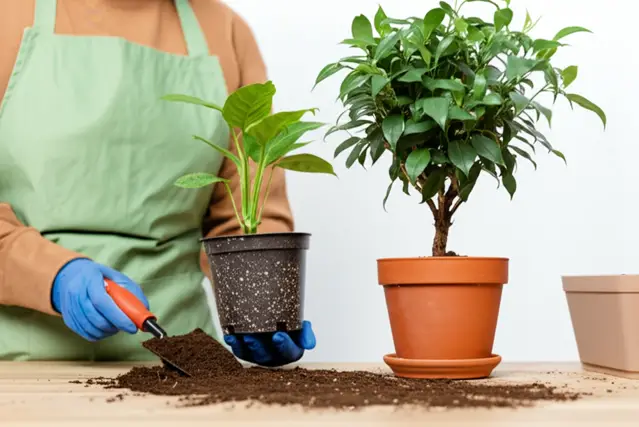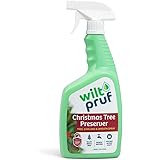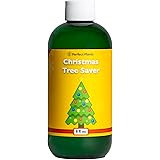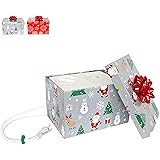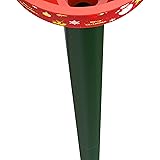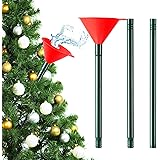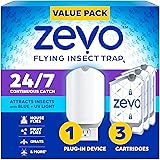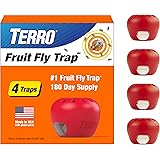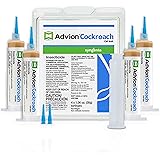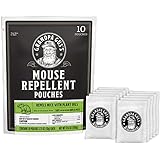Your houseplants are more than just decorations; they’re living companions that brighten your home and purify your air. But like any living thing, they have needs. One of the most crucial aspects of houseplant care is knowing when and how to repot them. Neglecting this can lead to stunted growth, nutrient deficiencies, and ultimately, a plant that simply can’t thrive. In 2025, with the rise of indoor gardening and a greater understanding of plant biology, recognizing the signs that your plant needs a bigger pot is more important than ever. This comprehensive guide, informed by the latest botanical knowledge, will equip you with the insights you need to ensure your green friends flourish.
We’ll delve into the telltale signs your plant is calling out for more space, explore the science behind why repotting is essential, and provide a step-by-step guide to repotting success, informed by a seasoned botanist. From understanding root-bound conditions to choosing the right potting mix, we’ve got you covered. So, grab your gardening gloves, and let’s get started!
Read More: About Things to Know Before Fertilizing: Get Greener Results!
The Urgent SOS: Obvious Signs Your Plant Needs Repotting
Sometimes, the signs are glaringly obvious. Think of it as your plant waving a leafy flag, desperately signaling for help. Ignoring these clear indicators can lead to irreversible damage. Here are some of the most prominent signs:
Roots Circling the Drain Holes
This is perhaps the most unmistakable sign that your plant is severely root-bound. If you can see roots emerging from the drainage holes at the bottom of the pot, it means the plant has completely exhausted the available space. The roots are literally searching for more room to grow and are pushing their way out. In 2024, with the increased use of self-watering pots, this sign might be slightly less obvious, but still check regularly.
Real-World Example: Imagine your favorite Pothos, trailing beautifully from a hanging basket. You notice small, white roots snaking their way out of the drainage holes. This is a clear signal that it’s time to move your Pothos to a larger container.
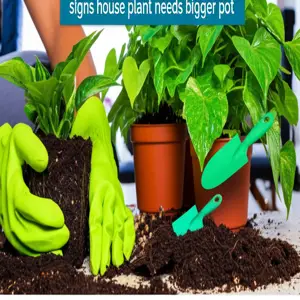
root bound
Roots Pushing the Plant Upwards
This is another dramatic sign of a root-bound plant. The roots have grown so densely that they’re literally pushing the plant out of its pot. The soil might even appear cracked and lifted around the edges. This situation is often observed in faster-growing species like ZZ plants or Snake plants.
Stunted Growth, Despite Proper Care
Are you providing adequate water, light, and fertilizer, yet your plant remains stubbornly small? If new growth is minimal or non-existent, it could be because the roots are constricted and unable to absorb the necessary nutrients. Think of it like trying to feed a large group of people through a tiny straw. In 2024, with access to more sophisticated fertilizers, over-fertilizing can mask this issue, so be mindful of root health.
Slowed Water Absorption
Have you noticed that water runs straight through the pot without being absorbed by the soil? This is a classic symptom of a root-bound plant. The dense root mass prevents the soil from properly absorbing water, leading to dehydration and nutrient deficiencies. The water is finding the path of least resistance, usually along the edges of the pot.
Plant Seems Top-Heavy and Easily Tips Over
If your plant is disproportionately large compared to the pot size, it might be time for a repot. The top-heavy growth coupled with a small root system makes the plant unstable and prone to tipping over, especially in windy conditions or if accidentally bumped. This is common in larger plants like Fiddle Leaf Figs that might outgrow their pots quickly.
Subtle Clues: Less Obvious Signs Your Plant Might Need Repotting
Sometimes, the signs aren’t as blatant. Your plant might be subtly hinting at its discomfort. Learning to recognize these subtle clues can prevent problems before they become severe. These often require a closer inspection of both the plant and the soil.
Frequent Wilting, Even After Watering
If your plant wilts frequently, even after consistent watering, it could indicate that the roots are struggling to absorb enough moisture. A root-bound plant may not have sufficient root mass to effectively transport water to the leaves. This is especially true if you’re using a well-draining potting mix, as the water passes through quickly.
Real-World Example: Your Peace Lily, known for its dramatic wilting, seems to wilt faster than usual. You water it regularly, but it still droops within a day or two. This could be a sign that it needs a larger pot.
Yellowing Leaves (Chlorosis)
Yellowing leaves, particularly the lower ones, can be a sign of nutrient deficiency. When a plant is root-bound, it has difficulty absorbing nutrients from the soil, leading to chlorosis. However, be aware that yellowing leaves can also be caused by other factors, such as overwatering or underwatering, so it’s important to rule out other possibilities.
Salt Buildup on the Soil Surface
A white, crusty buildup on the soil surface indicates a buildup of mineral salts from tap water and fertilizers. While this can be addressed by flushing the soil, it can also be a sign that the soil is depleted and the roots are struggling to function properly. Repotting with fresh soil can help to alleviate this issue.
Soil Compaction and Poor Drainage
Over time, potting soil can become compacted, reducing its ability to drain properly and provide adequate aeration for the roots. If the soil feels dense and heavy, and water pools on the surface after watering, it’s likely that the soil has become compacted and needs to be replaced. This is particularly common with older potting mixes that have broken down.
Slower Growth Rate Compared to Expected Norm
Each plant species has a typical growth rate. If you notice that your plant’s growth has slowed down significantly compared to what’s considered normal for its species, it could be because it’s root-bound. Do some research on your plant’s typical growth habits to determine if repotting is necessary. Online plant communities and resources can be helpful in this regard.
The Botanist’s Perspective: Understanding the ‘Why’ Behind Repotting
Beyond the visual signs, understanding the underlying botanical principles behind repotting will help you make informed decisions about your plant’s care. A botanist views repotting not just as a cosmetic procedure, but as a critical intervention to support the plant’s physiological needs.
Root Bound: A Confined Existence
The term “root-bound” describes a situation where a plant’s roots have completely filled the available space in its pot. When this happens, the roots become constricted and tangled, hindering their ability to absorb water and nutrients. Imagine living in a tiny room with no space to move – that’s essentially what it’s like for a root-bound plant.
Nutrient Depletion: The Soil’s Exhaustion
Over time, the nutrients in the potting soil are gradually depleted as the plant consumes them. Even with regular fertilization, the soil can become depleted and lose its ability to support healthy growth. Repotting with fresh soil replenishes these essential nutrients and provides the plant with a renewed source of nourishment. Think of it as giving your plant a fresh plate of food.
Improving Soil Structure and Aeration
As mentioned earlier, potting soil can become compacted over time, reducing its ability to drain properly and provide adequate aeration for the roots. Roots need oxygen to function properly, and compacted soil can suffocate them. Repotting with fresh, well-draining soil improves soil structure and aeration, allowing the roots to breathe and thrive. The proper soil mix allows for gas exchange, bringing oxygen to the roots and carrying away carbon dioxide.
Space for Growth: Allowing Expansion
Ultimately, plants need space to grow. A larger pot provides the roots with more room to expand, which in turn allows the plant to grow larger and produce more foliage, flowers, or fruits. Repotting is an essential part of allowing your plant to reach its full potential. This also prevents the roots from circling and girdling themselves, which can eventually choke the plant.
Choosing the Right Pot: Size, Material, and Drainage
Selecting the right pot is just as important as recognizing the need for repotting. The pot should be appropriately sized, made of a suitable material, and have adequate drainage. A wrong choice here can undo all your hard work.
Pot Size: Not Too Big, Not Too Small
As a general rule, choose a pot that is 1-2 inches larger in diameter than the current pot. Repotting into a pot that is too large can actually be detrimental, as the excess soil can retain too much moisture and lead to root rot. Think of it as moving from a studio apartment to a mansion – the plant won’t be able to utilize all the extra space effectively.
Table: Pot Size Guide
| Current Pot Diameter | Recommended New Pot Diameter |
|---|---|
| 4 inches | 5-6 inches |
| 6 inches | 7-8 inches |
| 8 inches | 9-10 inches |
| 10 inches | 11-12 inches |
Pot Material: Terracotta vs. Plastic vs. Glazed Ceramic
- Terracotta: Terracotta pots are porous, allowing for better air circulation and drainage. They are a good choice for plants that prefer drier conditions, such as succulents and cacti. However, they can dry out quickly and may require more frequent watering.
- Plastic: Plastic pots are lightweight, inexpensive, and retain moisture well. They are a good choice for plants that prefer moist conditions. However, they don’t breathe as well as terracotta pots and can lead to root rot if the soil is not well-draining.
- Glazed Ceramic: Glazed ceramic pots are decorative and retain moisture well. However, they don’t breathe as well as terracotta pots and can be heavy. Ensure the pot has drainage holes.
Consider the specific needs of your plant when choosing a pot material. For example, succulents and cacti thrive in terracotta, while moisture-loving plants like ferns do well in plastic or glazed ceramic.
Drainage: The Most Critical Factor
Adequate drainage is absolutely essential for healthy plant growth. Ensure that the pot has drainage holes at the bottom to allow excess water to escape. Without drainage holes, the soil will become waterlogged, leading to root rot and other problems. If you’re using a decorative pot without drainage holes, you can place the plant in a plastic nursery pot inside the decorative pot.
Choosing the Right Potting Mix: Tailoring to Your Plant’s Needs
Potting mix is not just “dirt.” It’s a carefully formulated blend of ingredients designed to provide the right balance of drainage, aeration, and nutrients for container-grown plants. Using garden soil in pots is a common mistake that can lead to problems.
General Purpose Potting Mix: A Good Starting Point
A general-purpose potting mix is suitable for most houseplants. It typically contains a blend of peat moss, perlite, and vermiculite. These ingredients provide good drainage, aeration, and water retention. However, it’s important to choose a high-quality potting mix from a reputable brand.
Specialty Potting Mixes: Catering to Specific Plants
Some plants have specific potting mix requirements. For example:
- Succulents and Cacti: These plants need a well-draining potting mix that is specifically formulated for succulents and cacti. This type of mix typically contains a higher proportion of sand or perlite.
- Orchids: Orchids need a very airy and well-draining potting mix. Orchid mixes typically contain bark, perlite, and other coarse materials.
- African Violets: African violets need a slightly acidic potting mix that retains moisture well. African violet mixes typically contain peat moss, vermiculite, and perlite.
Research your plant’s specific needs and choose a potting mix that is appropriate for its species. Using the wrong potting mix can lead to problems such as root rot or nutrient deficiencies.
Making Your Own Potting Mix: DIY Options
You can also make your own potting mix by combining different ingredients. A basic recipe for a general-purpose potting mix includes:
- 1 part peat moss or coco coir
- 1 part perlite
- 1 part vermiculite
You can adjust the proportions of these ingredients to create a potting mix that is tailored to your plant’s specific needs. For example, if you’re growing succulents, you can add more perlite to improve drainage. Making your own potting mix allows you to control the quality of the ingredients and create a mix that is perfectly suited to your plants.
2024 Trend: Coco coir is becoming increasingly popular as a sustainable alternative to peat moss. It’s a byproduct of coconut processing and has similar water-retention properties to peat moss.
Repotting Step-by-Step: A Botanist’s Guide
Repotting can seem daunting, but it’s actually a straightforward process. Here’s a step-by-step guide to repotting your houseplants, based on best practices recommended by botanists:
Step 1: Gather Your Supplies
Before you begin, gather all the necessary supplies:
- The new pot
- The appropriate potting mix
- A trowel or small shovel
- Gardening gloves
- A watering can
- Optional: Root pruning shears
Step 2: Gently Remove the Plant from its Old Pot
Carefully remove the plant from its old pot. You may need to gently loosen the soil around the edges of the pot with a trowel. If the plant is root-bound, you may need to gently squeeze the pot to loosen the roots. Avoid pulling the plant by its stem, as this can damage it. If the plant is very tightly bound, you may need to cut the pot away from the roots.
Step 3: Inspect and Prune the Roots
Once the plant is out of the pot, inspect the roots. Remove any dead, damaged, or circling roots. You can use root pruning shears to trim the roots. Don’t be afraid to prune the roots; this can actually stimulate new growth. Removing up to one-third of the root ball is generally safe for most plants. This is also an opportunity to gently loosen the root ball with your fingers, separating any tightly bound roots.
Step 4: Add Fresh Potting Mix to the New Pot
Add a layer of fresh potting mix to the bottom of the new pot. The amount of potting mix you add will depend on the size of the pot and the size of the root ball. You want to ensure that the top of the root ball will be level with the top of the pot. Make sure the potting mix is slightly moistened before adding it to the pot. This will help it settle around the roots.
Step 5: Position the Plant in the New Pot
Carefully position the plant in the new pot. Ensure that the top of the root ball is level with the top of the pot. Adjust the amount of potting mix beneath the root ball if necessary.
Step 6: Fill in Around the Root Ball with Potting Mix
Fill in around the root ball with fresh potting mix. Gently press down on the potting mix to remove any air pockets. Leave about an inch of space between the top of the potting mix and the rim of the pot. This will make it easier to water the plant without spilling water over the sides.
Step 7: Water Thoroughly
Water the plant thoroughly after repotting. Allow the water to drain out of the drainage holes. This will help to settle the potting mix around the roots.
Step 8: Provide Post-Repotting Care
After repotting, place the plant in a location that is appropriate for its species. Avoid placing the plant in direct sunlight for a few days, as this can stress the plant. Water the plant regularly, but avoid overwatering. Fertilize the plant after a few weeks, once it has had time to adjust to its new environment.
Timing is Everything: When to Repot Your Houseplants
The best time to repot houseplants is during their active growing season, typically in the spring or early summer. This is when the plants are actively producing new roots and foliage, and they will be able to recover from the stress of repotting more quickly. Avoid repotting during the dormant season (fall and winter), as the plants are less likely to recover. However, if a plant is severely root-bound or showing signs of distress, it may be necessary to repot it at any time of year.
Consider the specific needs of your plant when determining when to repot. Some plants, such as fast-growing species, may need to be repotted every year, while others may only need to be repotted every few years. Regularly inspect your plants for signs that they need repotting, and adjust your repotting schedule accordingly.
Dealing with Difficult Plants: Special Considerations
Some plants are more challenging to repot than others. Here are some special considerations for dealing with difficult plants:
Large Plants
Repotting large plants can be physically demanding. You may need to enlist the help of a friend or family member. Consider using a dolly or other moving device to transport the plant. It may also be helpful to repot the plant outdoors, where you have more space to work.
Spiny or Thorny Plants
Wear thick gloves and protective clothing when repotting spiny or thorny plants. Consider using tongs or other tools to handle the plant. Be careful not to damage the spines or thorns, as this can injure you or the plant.
Fragile Plants
Handle fragile plants with extra care. Avoid touching the leaves or stems, as this can damage them. Support the plant gently while repotting. Use a lightweight potting mix to avoid weighing down the plant.
Plants with Taproots
Plants with taproots, such as cacti and succulents, are particularly sensitive to root disturbance. Be very careful when removing the plant from its old pot. Avoid damaging the taproot. Choose a pot that is deep enough to accommodate the taproot.
Common Mistakes to Avoid When Repotting
Repotting is generally a safe and beneficial practice, but it’s important to avoid common mistakes that can harm your plants:
Using Garden Soil
Never use garden soil in pots. Garden soil is too heavy and compact, and it doesn’t drain well. It can also contain pests and diseases that can harm your plants. Always use a high-quality potting mix specifically formulated for container-grown plants.
Repotting into Too Large of a Pot
As mentioned earlier, repotting into a pot that is too large can lead to root rot. The excess soil retains too much moisture, creating an environment that is conducive to fungal growth. Choose a pot that is only 1-2 inches larger in diameter than the current pot.
Damaging the Roots
Be careful not to damage the roots when repotting. Handle the plant gently and avoid pulling on the roots. If the plant is root-bound, gently loosen the roots before repotting. You can also prune the roots to stimulate new growth, but avoid removing more than one-third of the root ball.
Read More: How to Separate a Monstera: Easy Steps + Care Tips
Overwatering or Underwatering After Repotting
Water the plant thoroughly after repotting, but avoid overwatering. Allow the water to drain out of the drainage holes. Overwatering can lead to root rot. Also, avoid underwatering, as this can stress the plant. Check the soil moisture regularly and water when the top inch of soil feels dry.
Fertilizing Immediately After Repotting
Avoid fertilizing immediately after repotting. The plant needs time to adjust to its new environment. Fertilizing too soon can burn the roots. Wait a few weeks before fertilizing, and use a diluted fertilizer solution.
Sustainable Repotting: Eco-Friendly Practices for 2024
In 2024, sustainability is paramount. Here are some eco-friendly repotting practices to consider:
Using Biodegradable Pots
Consider using biodegradable pots made from materials such as coconut coir, peat moss, or paper pulp. These pots can be planted directly into the ground, eliminating the need to remove the plant from its pot. This reduces stress on the plant and minimizes waste.
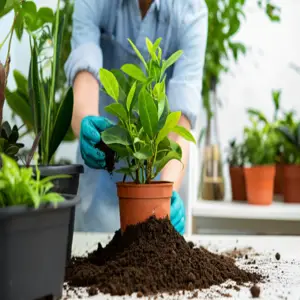
repotting
Composting Old Potting Mix
Don’t throw away old potting mix. You can compost it and reuse it in your garden or in other pots. Remove any roots or other debris from the potting mix before composting. Add the potting mix to your compost bin or pile, along with other organic materials such as leaves, grass clippings, and food scraps.
Choosing Sustainable Potting Mix Ingredients
As mentioned earlier, coco coir is a sustainable alternative to peat moss. It’s a byproduct of coconut processing and has similar water-retention properties to peat moss. Other sustainable potting mix ingredients include compost, worm castings, and biochar.
Recycling Plastic Pots
If you’re using plastic pots, recycle them whenever possible. Many garden centers and nurseries accept plastic pots for recycling. You can also check with your local municipality to see if they offer plastic pot recycling programs.
Regulations on Potting Soil: What You Need to Know in 2024
While there aren’t strict, overarching “regulations” on potting soil in the same way there are for, say, pesticides, there are definitely aspects to be aware of, particularly regarding ingredient labeling, organic certification, and potential environmental impacts. This is even more relevant in 2024 as consumer awareness grows.
Labeling Requirements: Truth in Advertising
In many regions, potting soil manufacturers are required to accurately label the ingredients in their products. This helps consumers make informed choices about what they’re using in their gardens and homes. Look for clear labeling that lists the types of materials used (peat moss, perlite, vermiculite, etc.) and their percentages. This is less a formal “regulation” and more a consumer protection standard enforced by weights and measures agencies or similar bodies.
Organic Certification: USDA and Beyond
If you’re looking for organic potting soil, check for certification from a reputable organization, such as the USDA (in the United States) or equivalent bodies in other countries. Organic certification ensures that the potting soil meets specific standards for ingredient sourcing, processing, and environmental impact. For example, organic potting soil cannot contain synthetic fertilizers or pesticides.
Peat Moss Harvesting: Environmental Concerns
Peat moss is a common ingredient in potting soil, but its harvesting has significant environmental impacts. Peat bogs are important carbon sinks, and their destruction contributes to climate change. As a result, there is increasing pressure on manufacturers to reduce their reliance on peat moss and switch to more sustainable alternatives, such as coco coir or compost. Some regions are even considering regulations to restrict peat moss harvesting. Stay informed about the latest developments in this area. *_Consider linking here to a credible source about the environmental impact of peat moss harvesting._*
Heavy Metals and Contaminants: Testing and Standards
Potting soil can sometimes contain heavy metals or other contaminants. While there aren’t always strict regulations, reputable manufacturers often test their products to ensure they meet safety standards. Look for products that have been tested and certified by independent organizations. This is particularly important if you’re growing edible plants.
Disposal Regulations: Handling Waste Properly
While there are no specific regulations for disposing of *used* potting soil in most areas, it’s generally recommended to compost it or dispose of it properly. Avoid dumping potting soil in natural areas, as this can disrupt ecosystems and spread invasive species. Check with your local municipality for guidance on proper disposal methods. In some areas, commercial composting facilities may have specific requirements for accepting potting soil.
Trends in Houseplant Repotting in 2024
The world of houseplant care is constantly evolving. Here are some of the key trends in houseplant repotting in 2024:
Increased Focus on Sustainability
As mentioned earlier, sustainability is a major trend in houseplant care. Consumers are increasingly looking for eco-friendly potting mixes, biodegradable pots, and sustainable repotting practices. *_Link to a relevant sustainability resource._*
Rise of DIY Potting Mixes
More and more people are making their own potting mixes, allowing them to customize the mix to their plant’s specific needs and control the quality of the ingredients. Online resources and communities provide a wealth of information on DIY potting mix recipes. *_Link to a forum or blog with DIY potting mix recipes._*
Smart Potting Solutions
Smart pots and self-watering pots are becoming increasingly popular. These pots can help to regulate moisture levels and reduce the need for frequent repotting. Some smart pots even have sensors that monitor soil moisture, temperature, and nutrient levels.
Vertical Gardening and Repotting Strategies
With limited space in urban environments, vertical gardening is gaining popularity. Repotting strategies for vertical gardens are evolving to accommodate the unique challenges of these systems, such as limited soil volume and increased drainage. *_Link to an article about repotting vertical gardens._*
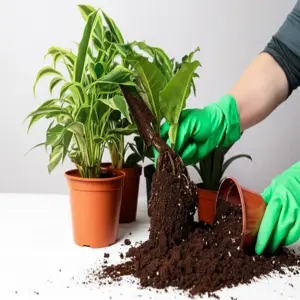
plant health
Community Potting Events and Workshops
Community potting events and workshops are becoming increasingly common. These events provide an opportunity for plant enthusiasts to learn from experts, share tips and tricks, and repot their plants together. *_Link to a website listing local gardening events._*
FAQ: Your Houseplant Repotting Questions Answered
Still have questions about repotting your houseplants? Here are some frequently asked questions, answered by our botanist:
How often should I repot my houseplants?
The frequency of repotting depends on the plant species, its growth rate, and the size of the pot. Fast-growing plants may need to be repotted every year, while slow-growing plants may only need to be repotted every few years. Regularly inspect your plants for signs that they need repotting, such as roots circling the drain holes, stunted growth, or slow water absorption.
Can I repot a plant that is flowering?
It’s generally best to avoid repotting a plant that is actively flowering. Repotting can stress the plant, and it may drop its flowers. If you must repot a flowering plant, do so very gently and avoid disturbing the roots as much as possible.
What do I do if I accidentally damage the roots during repotting?
If you accidentally damage the roots during repotting, don’t panic. Gently trim away any damaged roots with clean pruning shears. Water the plant thoroughly after repotting and provide it with extra care. Avoid fertilizing the plant for a few weeks to allow it to recover.
My plant is too big to repot. What should I do?
If your plant is too big to repot, you can try “top dressing” the soil. This involves removing the top few inches of soil and replacing it with fresh potting mix. This will replenish the nutrients in the soil and improve drainage. You can also prune the roots to help keep the plant’s size in check.
Can I reuse old potting soil?
You can reuse old potting soil, but it’s important to sterilize it first to kill any pests or diseases. You can sterilize potting soil by baking it in the oven at 200 degrees Fahrenheit for 30 minutes. You can also steam sterilize potting soil using a steamer or pressure cooker.
What is root pruning and why is it important?
Root pruning is the process of trimming the roots of a plant. It’s important because it stimulates new root growth and helps to prevent the plant from becoming root-bound. Root pruning also allows you to keep the plant’s size in check. When repotting, you can remove up to one-third of the root ball without harming the plant.
What are the best types of pots for houseplants?
The best type of pot for houseplants depends on the plant species and your personal preferences. Terracotta pots are a good choice for plants that prefer drier conditions, while plastic pots are a good choice for plants that prefer moist conditions. Ensure that the pot has drainage holes at the bottom to allow excess water to escape.
How do I know if I’m overwatering or underwatering my plant after repotting?
Overwatering and underwatering can both cause problems after repotting. Overwatering can lead to root rot, while underwatering can stress the plant. Check the soil moisture regularly and water when the top inch of soil feels dry. Avoid letting the plant sit in standing water.
Should I fertilize my plant immediately after repotting?
No, you should avoid fertilizing your plant immediately after repotting. The plant needs time to adjust to its new environment. Fertilizing too soon can burn the roots. Wait a few weeks before fertilizing, and use a diluted fertilizer solution.
How do I choose the right size pot for my plant?
As a general rule, choose a pot that is 1-2 inches larger in diameter than the current pot. Repotting into a pot that is too large can lead to root rot. If you’re unsure, it’s better to err on the side of a smaller pot than a larger one.
Final Thoughts: A Thriving Indoor Jungle Awaits
Repotting your houseplants is an essential part of their care, and by understanding the signs that your plant needs a bigger pot, choosing the right materials, and following the steps outlined in this guide, you can ensure that your green companions thrive for years to come. Remember that each plant is unique, and its needs may vary. Observe your plants closely, and adjust your care accordingly. In 2024, with the increased availability of information and resources, there’s no excuse for neglecting your houseplants. Embrace the journey of learning about plant care, and enjoy the rewards of a thriving indoor jungle.
By staying informed about current trends, sustainable practices, and even the subtle nuances of plant behavior, you’re not just tending to plants – you’re cultivating a connection with nature within your own home. The knowledge you’ve gained here empowers you to not only react to problems but to proactively anticipate and prevent them, setting the stage for a flourishing indoor garden. So, armed with this comprehensive guide and a touch of green-thumb intuition, venture forth and create a vibrant, healthy space where your houseplants can truly thrive. The joy of watching your plants grow and flourish is a reward in itself, a testament to the care and attention you provide. Remember, the journey of plant parenthood is a continuous learning experience, and every repotting is a new opportunity to connect with the life that thrives within your home.
Auto Amazon Links: No products found.
Wilt-Pruf® Christmas Tree/Cutting Preserver Spray |Preserves Christmas Trees, Wreaths, Garlands, Cuttings and Carved Pumpkins | Reduces Needle Drop | Keeps Cut Trees Fresh Longer | Natural (32 oz)
$21.99 (as of November 8, 2025 20:37 GMT +00:00 - More info- Product prices and availability are accurate as of the date/time indicated and are subject to change. Any price and availability information displayed on [relevant Amazon Site(s), as applicable] at the time of purchase will apply to the purchase of this product.
Perfect Plants Christmas Tree Saver 8oz. | Easy Use Xmas Tree Preserver Food | Have Healthy Green Christmas Trees All Holiday Season
$13.99 (as of November 8, 2025 20:37 GMT +00:00 - More info- Product prices and availability are accurate as of the date/time indicated and are subject to change. Any price and availability information displayed on [relevant Amazon Site(s), as applicable] at the time of purchase will apply to the purchase of this product.
HoHoHoH2o Automatic Christmas Tree Watering System Device, Santa’s Tree Helper Keeps Your Christmas Tree Healthy and Fresh, Refillable 2.5 gallons Capacity Box - Silver/Festive
$99.95 (as of November 8, 2025 20:37 GMT +00:00 - More info- Product prices and availability are accurate as of the date/time indicated and are subject to change. Any price and availability information displayed on [relevant Amazon Site(s), as applicable] at the time of purchase will apply to the purchase of this product.
SFAED Christmas Tree Watering System (46")
Now retrieving the price.
(as of November 8, 2025 20:37 GMT +00:00 - More info- Product prices and availability are accurate as of the date/time indicated and are subject to change. Any price and availability information displayed on [relevant Amazon Site(s), as applicable] at the time of purchase will apply to the purchase of this product.
Christmas Tree Watering Funnel-Watertight Christmas Tree Funnel,Long Christmas Tree Watering System,Christmas Tree Waterer Xmas Plant Watering Tool for Real Live Tall Chirstmas Trees
$16.99 (as of November 8, 2025 20:37 GMT +00:00 - More info- Product prices and availability are accurate as of the date/time indicated and are subject to change. Any price and availability information displayed on [relevant Amazon Site(s), as applicable] at the time of purchase will apply to the purchase of this product.
Zevo Flying Insect Trap & 3 Refill Cartridges - Plug in Fly Trap & Indoor Bug Catcher for Gnats, House & Fruit Flies - Blue & UV Light Technology, Mess-Free Alternative to Bug Zapper
$25.96 (as of November 9, 2025 03:09 GMT +00:00 - More info- Product prices and availability are accurate as of the date/time indicated and are subject to change. Any price and availability information displayed on [relevant Amazon Site(s), as applicable] at the time of purchase will apply to the purchase of this product.
TERRO Fruit Fly Traps for Indoors (4 Pack) + 180 Days of Lure Supply
$15.99 (as of November 9, 2025 03:09 GMT +00:00 - More info- Product prices and availability are accurate as of the date/time indicated and are subject to change. Any price and availability information displayed on [relevant Amazon Site(s), as applicable] at the time of purchase will apply to the purchase of this product.
TERRO Ant Killer Bait Stations T300B - Liquid Bait to Eliminate Ants - Bait System - 12 Count Stations for Effective Indoor Ant Control
$11.44 (as of November 9, 2025 03:09 GMT +00:00 - More info- Product prices and availability are accurate as of the date/time indicated and are subject to change. Any price and availability information displayed on [relevant Amazon Site(s), as applicable] at the time of purchase will apply to the purchase of this product.
Advion Cockroach Gel Bait, 4 Tubes x 30-Grams, 1 Plunger and 2 Tips, German Roach Insect Pest Control, Indoor and Outdoor Use, Roach Killer Gel for American, German and Other Major Cockroach Species
$27.25 (as of November 9, 2025 03:09 GMT +00:00 - More info- Product prices and availability are accurate as of the date/time indicated and are subject to change. Any price and availability information displayed on [relevant Amazon Site(s), as applicable] at the time of purchase will apply to the purchase of this product.
Grandpa Gus’s Extra-Strength Mouse Repellent Pouches, Peppermint & Cinnamon Oil, Natural Rodent Deterrent Control for Garage, RV, Car, Basement, Attic, Storage, 1.75 Oz (Pack of 10)
$31.99 (as of November 9, 2025 03:09 GMT +00:00 - More info- Product prices and availability are accurate as of the date/time indicated and are subject to change. Any price and availability information displayed on [relevant Amazon Site(s), as applicable] at the time of purchase will apply to the purchase of this product.
